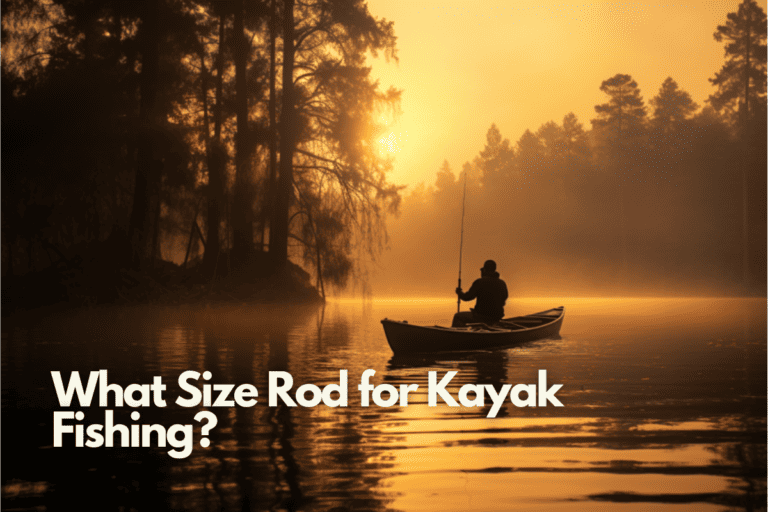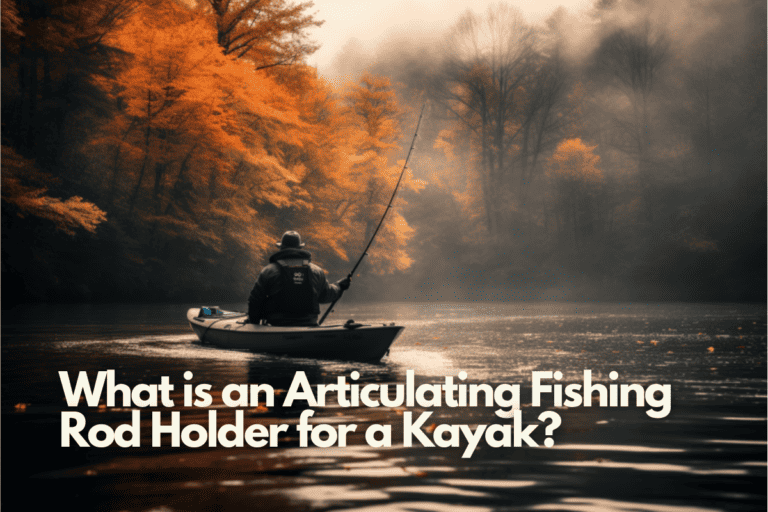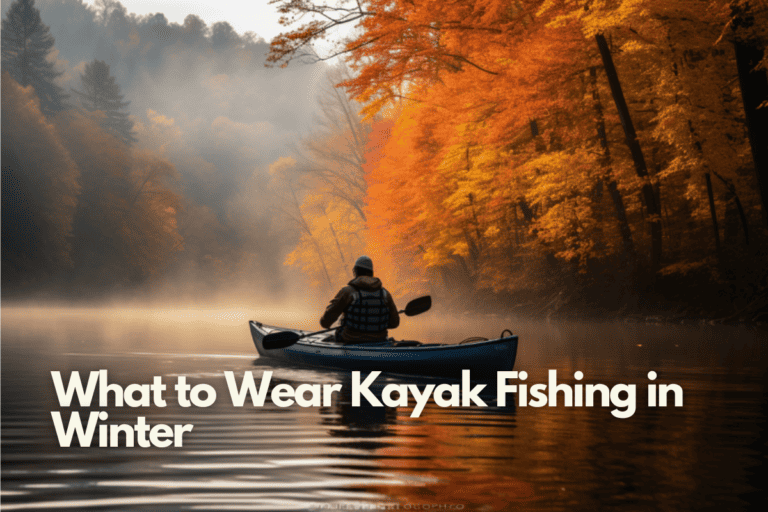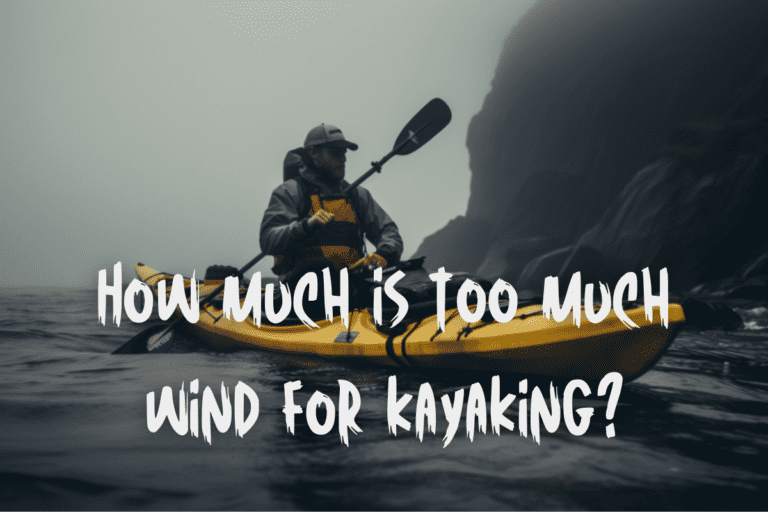Fishing Kayak VS Canoe: The Better Boat for Fishing in 2023

Imagine you’re on a serene lake, your line cast out, waiting for that exciting tug. But are you in a canoe or a kayak? That’s the question.
You’re about to embark on a journey, comparing the merits of each. We’ll delve into the pros and cons, the subtle differences, and even share some tips to enhance your fishing experience.
So buckle up, let’s find the perfect vessel for your fishing adventures.
Fishing Kayak vs Canoe: Which Fits Better for Fishing
Let’s dive into whether a fishing kayak or a canoe is a better fit for your fishing adventures. The fishing kayak vs canoe debate is central to your overall experience, as each vessel offers unique pros and cons.
Fishing kayaks provide excellent maneuverability in water. They’re easy to steer, making them perfect for navigating narrow waterways or tight spots. They’re also generally equipped with rod holders and specialized compartments for your fishing gear, allowing for a more organized and efficient fishing experience. However, they typically have less room for movement, which might be a drawback if you’re planning a long fishing trip.
Canoes, on the other hand, offer you a lot more space. They’re great for longer trips where you need to carry more gear or if you’re fishing with a buddy. Canoes also have a higher profile, which can be an advantage in deeper waters. But this also makes them less stable than kayaks, and they can be harder to maneuver in tight spaces or windy conditions.
So, which is better for fishing? It really depends on your personal needs and preferences. If you prioritize maneuverability and efficiency, a fishing kayak might be your best bet. But if you need more space and don’t mind sacrificing some stability, a canoe could be a better fit.
Advantages and Disadvantages of Canoes and Kayaks

Let’s take a look at the pros and cons of these two types of vessels, which will help you understand which might suit your needs best. Consider yourself part of a community of anglers who deliberate on the canoe vs kayak debate. Recognizing the advantages and disadvantages of canoes and kayaks is a rite of passage in your journey toward becoming a seasoned fisherman.
| Feature | Canoe | Kayak |
|---|---|---|
| Deck Type | Open | Closed (except sit-on) |
| Stability in Rough Waters | Less Stable | More Stable |
| Space & Comfort | Spacious, more legroom | Confined, less legroom |
| Maneuverability | Less | High |
| Paddling Effort | Easier | Harder |
| Suitability for Long Trips | Great | Moderate-Low |
Fishing from a canoe, you’ll appreciate its spaciousness. It’s a vessel designed for long fishing excursions, with plenty of room for you, a fishing buddy, and all your gear. But remember, its broader design can be a bit of a disadvantage in turbulent waters.
Then there’s the kayak. Sleek and streamlined, fishing from a kayak offers a stability that’s hard to beat. It’s a perfect companion for choppy waters and solo fishing trips. However, the closed-deck design might feel a bit cramped if you’re planning a longer trip or want to bring along more equipment.
The kayak and canoe each have their unique advantages, depending on your fishing plans. If you’re heading out for a leisurely day of fishing with a friend, a canoe might be your best bet. But if you’re tackling rough waters or want a speedy, agile vessel, the kayak wins the fishing kayak vs canoe debate.
Canoe & Kayak Fishing: Similarities and Key Differences
Despite their differences, there’s a surprising number of similarities between these two vessels, but also key distinctions that’ll determine the best fit for your angling adventures.
- Both offer access to remote fishing locations.
- Require paddling, though motorized and pedal options are available.
- Can be equipped with fishing accessories like rod holders and fish finders.
Whether you’re comparing canoe and kayak fishing, the similarities and key differences are noteworthy. Both canoes and kayaks grant you the freedom to reach remote fishing spots inaccessible by larger boats. They offer a tranquil, close-to-nature experience, where it’s just you, your fishing equipment, and the calm water.
Canoe fishing and kayak fishing have their unique advantages. Kayaks, with their slim profile and lighter weight, are ideal for speed and maneuverability. They’re perfect for navigating narrow, shallow waters where fish often hide. On the other hand, canoes are more spacious, providing ample room for your fishing gear and an additional angler if you prefer company.
| Feature | Canoe | Kayak |
|---|---|---|
| Load Capacity | Higher (can carry more equipment and passengers) | Lower |
| Operation | Single-bladed paddle | Double-bladed paddle |
| Cost | Generally more expensive | Range varies, but can be more affordable |
The debate of fishing kayak vs canoe often comes down to personal preference and the nature of your fishing trip. If stability and comfort are your priorities, a canoe might be your best bet. They’re wider, more stable, and allow you to sit higher, which is beneficial for sight fishing.
However, if you’re looking for a more adventurous fishing trip in rougher waters, a kayak could be the way to go. Kayaks are lower to the water and have sealed compartments, making them less likely to capsize in choppy conditions.
Tips for Choosing the Right Watercraft and Fishing Effectively
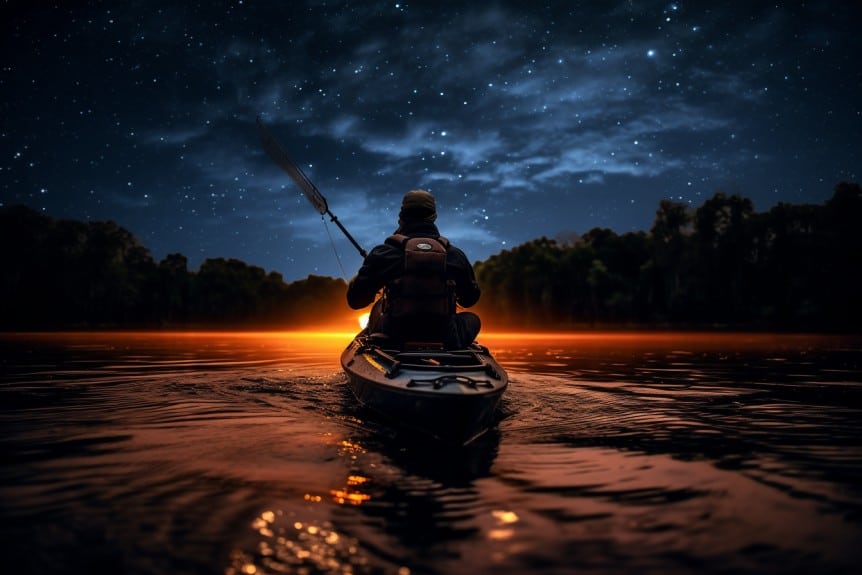
Choosing the perfect watercraft for your angling adventures isn’t always easy, but understanding your preferences and needs can simplify the process. When you’re torn between a fishing kayak vs canoe, consider factors like the type of fishing you’ll be doing, the water conditions you’ll be navigating, and your comfort preferences.
- Consider the type of water you’ll be fishing in (calm vs. rough).
- Determine your budget.
- Think about comfort preferences.
- Decide on the kind of fishing experience you desire (short trips vs. long expeditions).
- Learn and master effective fishing techniques.
If you’re fishing in varied water conditions, a kayak might give you the versatility you need. Kayaks also offer a higher vantage point when casting and can be more comfortable for long fishing excursions. On the other hand, if comfort and storage space are your top priorities, a canoe may be your best bet. Canoes often have more room for gear and allow you to move around more freely.
Choosing the right watercraft is just the first step. To fish effectively, you’ll also need to master some techniques. Research the best times to fish, learn about the habits of the fish you’re targeting, and get comfortable with different casting techniques.
Remember, the type of bait you use can hugely impact your success. Make sure you’re using bait that’s appropriate for the type of fishing you’re doing. Don’t be afraid to experiment and learn from each experience.
Safety and Common Mistakes in Canoe and Kayak Fishing
It’s vital to address safety precautions and common errors that often occur during water activities to ensure a secure and enjoyable experience. Whether you’re opting for a fishing kayak vs canoe, you’re part of a community that values safety as much as a good catch.
Safety Tips:
- Always wear a life jacket.
- Be aware of the vessel’s stability limits.
- Check weather conditions before heading out.
- Inform someone about your fishing location and expected return time.
One common mistake in canoe and kayak fishing is not understanding your vessel’s stability. If you’re in a sit-on-top kayak, ensure you’re familiar with its tipping point to prevent a capsize. Similarly, knowing how to use your kayak paddle effectively can help maintain balance and steer clear of potential hazards.
Choosing a kayak for fishing over a canoe may come down to personal preference, but it’s essential to know the differences. Kayaks often offer better stability and are less likely to capsize compared to canoes. That said, some prefer the open design of a canoe for easier access to gear and unrestricted movement.
In both cases, remember that safety comes first. Always wear a life jacket, even if you’re a strong swimmer. Keep an eye on weather conditions and avoid venturing out in rough water. Plan your trip ahead of time, including where you’ll fish and how you’ll get back to shore.
Lastly, avoid the mistake of using the wrong bait or not being equipped with the necessary gear.
Common Mistakes:
- Not planning ahead.
- Using the wrong bait or lure.
- Ignoring bad weather conditions.
- Not having the proper equipment.
Be prepared and make your fishing adventure safe, enjoyable, and hopefully, fruitful! Remember, being part of this community means looking out for each other and yourself. So, always keep in mind the safety and common mistakes in canoe and kayak fishing.
Final Thoughts
You’ve got a lot to mull over when choosing between a fishing kayak or canoe. It’s a personal choice with no wrong answers.
While kayaks for fishing is getting way more popular, it’s all about what suits your style, needs, and budget.
Remember, safety first and happy fishing!
Frequently Asked Questions (FAQ)
Q: Canoe vs Kayak: Which is better for fishing?
A: Both canoe and kayak have their advantages and disadvantages when it comes to fishing. It ultimately depends on your personal preferences and fishing needs.
Q: What are the pros and cons of using a canoe for fishing?
A: The advantages of using a canoe for fishing include excellent maneuverability, ample storage space, and the ability to fish in both calm and rough waters. However, canoes can be more challenging to paddle and require more effort to navigate.
Q: What are the pros and cons of using a kayak for fishing?
A: Kayaks are generally more stable and easier to maneuver than canoes. They have built-in storage compartments, and some models are designed specifically for fishing, with rod holders and other fishing accessories. However, kayaks may not have as much storage space as canoes.
Q: Can I use a canoe or kayak for saltwater fishing?
A: Yes, both canoes and kayaks can be used for saltwater fishing. However, it’s important to choose a model that is suitable for saltwater conditions and has the necessary features, such as corrosion-resistant materials and proper sealing.
Q: Can I fish in a tandem kayak?
A: Yes, tandem kayaks are a great option for fishing if you prefer to fish with a partner or have extra space for gear. Tandem kayaks allow for better weight distribution and provide stability.
Q: Which type of fishing is better suited for canoe or kayak?
A: Canoes are better suited for fishing in larger bodies of water or when you need to carry more gear. They are ideal for leisurely fishing trips. On the other hand, kayaks are better suited for maneuvering in narrow rivers, streams, and small lakes.
Q: Can a canoe or kayak accommodate a trolling motor?
A: Yes, some canoes and kayaks are designed to accommodate trolling motors. However, it’s important to check the specifications and weight capacity of the watercraft to ensure it can handle the additional weight and power requirements.
Q: How much storage capacity do canoes and kayaks offer for fishing?
A: Canoes typically offer more storage capacity than kayaks due to their larger size. Canoes have ample space for carrying fishing gear, coolers, and other equipment. Kayaks, on the other hand, have smaller storage compartments but can still accommodate essential fishing items.
Q: What is the advantage of fishing in a canoe or kayak?
A: The advantage of fishing in a canoe or kayak is the ability to access remote fishing spots that are not easily reachable by larger boats. Canoes and kayaks can navigate shallow waters, allowing anglers to explore areas where fish are more likely to be found.
Q: Can you fish in rough seas with a canoe or kayak?
A: Fishing in rough seas with a canoe or kayak is not recommended. Both watercraft are more suitable for calm or moderately-choppy waters. It’s important to prioritize safety and choose appropriate water conditions for fishing.

